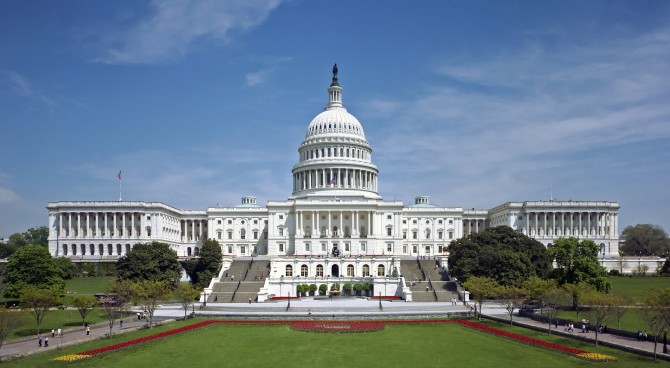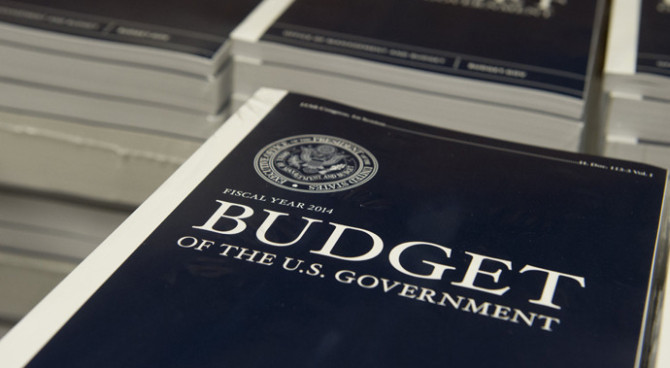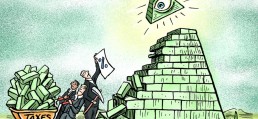The CBO failed to predict the tax-reform boom of the 1980s and the weak recovery in recent years.
By Phil Gramm and Michael Solon
April 19, 2017
The economic policies implemented by Presidents Reagan and Obama were the polar extremes of postwar policies. The economic consequences of those policies defined the highs and lows of America’s postwar experience. These extremes help define what might be expected if this administration and Congress are successful in reversing the Obama program and moving toward a more Reagan-type policy of tax reform and regulatory relief.
Mr. Obama implemented policies dramatically different from the postwar norm. Marginal tax rates soared; federal spending spiraled with a nearly trillion-dollar stimulus; Social Security Disability and food-stamp qualifications were eased; work requirements in welfare programs were suspended; Medicare and Medicaid were expanded and ObamaCare created. Federal debt doubled, and public and private debt held by the Federal Reserve quadrupled. New legislation, an unprecedented number of new regulations, and a torrent of executive orders transformed the role of government in American life.
Dramatically different policies were followed by dramatically different economic results. Economic growth during the Obama years averaged an astonishingly low 1.47%, as compared with the 3.4% average throughout all the postwar booms and busts before 2009. The extraordinary economic failure of the Obama era is not found in the recession that ended six months into his presidency but in the subsequent failed recovery, where real growth in gross domestic product averaged 2.1% per year, less than half the 4.5% average during previous postwar recoveries of similar duration.
Even after Mr. Obama announced a “summer of recovery” in 2010, the Congressional Budget Office was repeatedly forced to cut GDP and federal revenue estimates—by a total of $9 trillion and $4.2 trillion, respectively—due to weak economic growth. Federal revenues were supposed to rise by $650 billion over the following decade because of the Obama 2013 tax increase. They are now projected to fall by almost five times that amount because economic growth continues to falter.
GDP growth averaged 2.5% between 1974 and 1980. After taking office during a recession in 1981, Reagan cut marginal tax rates, cut nondefense and entitlement spending, and reduced the regulatory burden. Once those policies were in place, economic growth averaged 4.6% during the remainder of his presidency and federal revenues grew at double-digit rates in four of his last six years in office.
With efforts now under way to repeal the Obama program and replicate, at least in part, the successful tax reform of the Reagan era, it seems reasonable to assume that the economic benefits from these changes would help to pull the economy out of its current low-growth rut and propel it toward its historical postwar norm. Lifting the economy from the CBO’s post-Obama projection of 1.8% growth to the 3.4% postwar average would generate $4.6 trillion of additional federal revenues over 10 years.
Even if tax reform and the repeal of the Obama program closed only half the gap between the current 1.8% GDP growth rate and the 3.4% GDP growth rate that the economy averaged for the previous 64 years, that alone would deliver $2.3 trillion in new revenues due to higher growth over the next 10 years. This is important because together with the real reforms contained in the House tax-reform bill, this growth potential would make it possible for the House to drop the border-adjustment provision, which would supposedly raise $1.1 trillion in revenue. This change alone would remove the biggest obstacle to passing tax reform.
Budget and economic data over the seven postwar decades prove that American exceptionalism flourishes when supported by polices that promote freedom and opportunity and disappears when they are suppressed. But the CBO’s methods do not recognize that truth. No single part of the Obama program was ever scored in advance by the CBO as losing $4.2 trillion in federal revenues, but those losses reflect the totality of the impact of his policies.
No single Reagan action was ever scored by the CBO as producing the equivalent of $2.9 trillion in new revenues (relative to the current GDP), but that was the overall result of his program, which increased annual economic growth by an additional 1% over his presidency. The CBO originally assumed that the 1986 tax reform would produce no economic benefits and that the 1997 Balanced Budget Act would have only a small positive effect, yet together they helped produce a quarter-century of rapid growth, surging federal revenues and a balanced budget.
Since its models are incapable of distinguishing between failed and successful economic policies, the CBO will not score the economic growth and federal revenue coming from improved economic policy. If the House drops the border-adjustment provision, the current tax-reform bill could still be considered in the context of the budget reconciliation process, which requires only 51 votes in the Senate. But under Senate rules, a tax reform passed that way would be in place for only 10 years. If the reforms work as they have in the past, Republicans will win the 2018 elections, and then they can make the tax reform permanent.
Critics will denounce the idea that good policies have anything to do with economic growth. These are largely the same critics who have spent most of the past eight years denying that President Obama’s policies had anything to do with poor economic performance. But America itself is proof that policies matter. After all, policies of freedom and opportunity are what allowed America to take the world’s “huddled masses” and produce the most impressive empirical evidence the world has ever seen.
Mr. Gramm, a former chairman of the Senate Banking Committee, is a visiting scholar at the American Enterprise Institute. Mr. Solon is a partner of US Policy Metrics.
Appeared in the Apr. 20, 2017, print edition.



